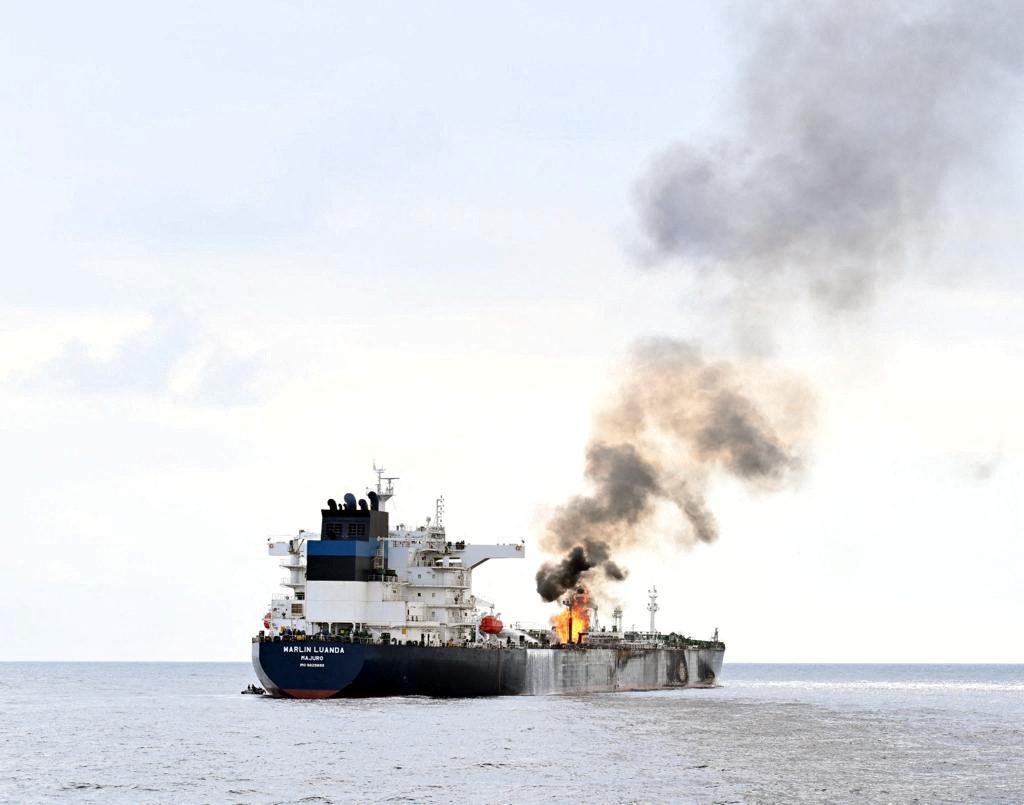
Shipping gets even dirtier as Houthi attacks fuel longer voyages
LONDON : Shipping’s carbon emissions climbed by 23 million tons in the first half of this year, partly as vessels took longer routes to avoid attacks in the Red Sea.
The 6% increase from a year earlier — equal to the annual amount spewed out by six coal-fired power plants — pushed the industry’s emissions to about 450 million tons, according to data from Marine Benchmark, which uses ship-tracking data to calculate the figures. The jump was biggest among container vessels, which emitted roughly 15% more over the period.
The data highlight how hard it will be for ships, which carry more than 80% of world trade, to hit emissions targets set by their global regulator. While the sector has repeatedly said it wants to become greener, the latest jump extends a long-term trend — though some drivers are beyond the industry’s control.
One of the contributing factors has been attacks by Yemen’s Houthi militants, who for months have targeted vessels in the Red Sea area in protest at Israel’s war with Hamas. That has forced ships to sail around South Africa instead of through the Suez Canal, adding thousands of miles to voyages.
There are other examples of cargoes now sailing longer distances, due to sanctions imposed on Russia over its invasion of Ukraine. Huge volumes of crude and fuel that were historically sent to the European Union are instead being hauled much farther to nations still willing to take those supplies, such as India, China and Brazil.
The International Maritime Organization has set a non-binding goal for the sector to hit net zero greenhouse gas emissions by mid-century. But reaching that target will require a big transformation of an industry that still largely relies on fossil fuels.
Separate figures from the IMO have previously pegged shipping’s annual CO2 emissions at more than 1 billion tons as of 2018 — though the methodology was different to Marine Benchmark’s.
